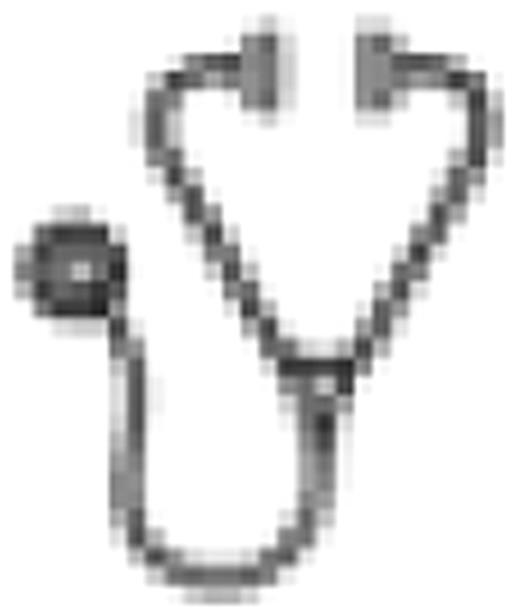Abstract
Mutations of the Wilms tumor (WT1) gene are found in ∼10% of younger (<60 years[y]) adult pts with de novo CN-AML and impact adversely on their outcome. The clinical significance of WT1 mutations has not yet been evaluated in older (≥60 y) CN-AML pts. Therefore, we analyzed frequency and clinical impact of WT1 mutations in the context of other molecular markers in a relatively large cohort of 243 pts ≥60 y (range, 60-83 y) with de novo CN-AML treated intensively on upfront cytarabine/daunorubicin-based CALGB protocols. Included pts were those with material available for analysis of WT1 mutation status and that of a panel of other validated molecular prognosticators including NPM1, FLT3 (ie, FLT3-ITD, FLT3-TKD) and CEBPA mutations, BAALC and ERG expression levels. Mutations in WT1 “hot spots” (exons 7 and 9) were assessed by DHPLC and sequencing. The results were compared with the findings in younger (18-59 y) CALGB pts (n=207) characterized molecularly in a similar fashion. Gene expression profiles in both populations were assessed centrally using Affymetrix U133 plus 2.0 microchip. Among the 243 older pts, 16 (7%) had WT1 mutations. Of those, 14 had single WT1 mutations in exon 7 [frameshift (n=8), nonsense (n=1), and missense (n=1)] or in exon 9 [missense (n=4)]; 1 pt had 2 frameshift mutations in exon 7, and 1 had 1 frameshift mutation in exon 7 and 1 missense mutation in exon 9. Compared with older WT1 wild-type pts, older WT1 mutated pts more often had FLT3-ITD (P<.001) and had lower hemoglobin (P=.01), and higher WBC (P=.03) and % blood blasts (P=.03). WT1 mutated pts had a trend for lower complete remission (CR) rates (50% v 70%, P=.16) and shorter OS (P=.08; Figure 1), but similar disease-free survival (DFS; P=.59; Figure 2) compared with WT1 wild-type pts. The frequency of WT1 mutations tended to be lower in older than younger pts (7% v 12%, P=.07). Mutation types and pretreatment clinical and molecular characteristics associated with WT1 mutations were similar between the two age groups. Despite differences in treatment intensity, there were no significant differences in younger v older WT1 mutated pts with regard to CR rates (P=.18), or OS (P=.68; Figure 1) or DFS (P=.66; Figure 2) durations. In contrast, younger WT1 wild-type pts had significantly higher CR rates (P<.001), and longer OS (P<.001; Figure 1) and DFS (P<.001; Figure 2) than older WT1 wild-type pts. Although associated with WT1 mutations in both the younger (P=.02) and older age groups, FLT3-ITD had no impact on CR rates (P=.28), or OS (P=.15) or DFS (P=.21) durations of all WT1 mutated pts after controlling for age-related treatment intensity. To provide insights into the molecular features associated with WT1 mutations we analyzed the whole cohort (younger and older) for genes differentially expressed (ie, P≤.001) between WT1 mutated and WT1 wild-type pts. A signature comprising 110 named genes was derived. Among the 71 upregulated genes in WT1 mutated pts, were those encoding the leukemia stem cell marker CD96 and the leukemia fusion protein partners PML and MLL. The most upregulated gene (6.2 fold) was GTSF1, which, like WT1, may be involved in germ cell development. Among the 39 genes downregulated in WT1 mutated pts, were those encoding SNRPN and SNURF, involved in pre-mRNA processing, and the insulin receptor and IRS2, upstream effectors of the PI3K/AKT pathway. In conclusion, WT1 mutations in older CN-AML pts are less frequent than in younger pts. While WT1 mutations independently associate with shorter OS and DFS in younger CN-AML pts, in older CN-AML pts they are only associated with trends for a worse CR rate and shorter OS. This difference appears due to the poor outcome of the older compared to younger WT1 wild-type pts, which reduced the prognostic impact of WT1 mutations in the former. Nevertheless, the outcome of pts with WT1 mutations is equally poor in older and younger pts regardless of differences in treatment, thereby suggesting that WT1 mutated CN-AML may constitute a distinct biologic entity across age groups. The unique gene expression signature associated with WT1 mutations could provide useful insights into WT1 mutation-driven leukemogenic mechanisms across age-related groups, and help in devising novel molecular targeted therapeutic approaches for this subtype of CN-AML.
No relevant conflicts of interest to declare.

This icon denotes an abstract that is clinically relevant.
Author notes
Asterisk with author names denotes non-ASH members.


